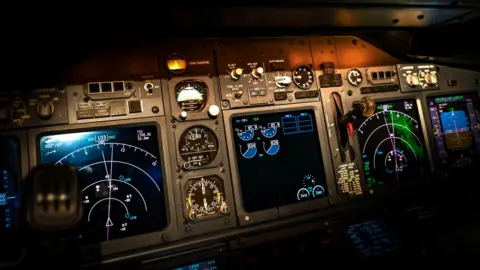In response to a preliminary investigation of the fatal Air India crash of Flight 171 in June, aviation regulators in India, South Korea, and Singapore are now conducting inspections of fuel control switches on Boeing aircraft. The investigation revealed that just seconds after takeoff, the jet's fuel supply was abruptly cut off, raising alarms about the safety of these crucial components.
The report indicated that the dual fuel control switches aboard the Boeing 787 had been switched off at a critical time during the flight. Each switch features a locking mechanism intended to prevent accidental disengagement, leading experts to suspect that human intervention was required to change their state, thus eliminating the likelihood of mechanical failure or design flaws.
In light of these findings, Indian authorities have ordered a comprehensive inspection of the fuel control switches within the country's fleet of Boeing planes. Simultaneously, Singapore Airlines announced that it had completed similar checks on its Boeing aircraft, including its low-cost affiliate, Scoot.
A notable aspect of the investigation refers to an advisory released by the Federal Aviation Administration (FAA) in 2018, urging airlines to inspect the locking mechanisms on Boeing fuel switches to verify their safety. Alarmingly, the preliminary findings noted that Air India had not undertaken these inspections, given that they were not mandatory, raising questions about the regulatory oversight in aviation maintenance.
While the report stops short of assigning blame or conclusively determining the causation of the crash, it underscores the importance of proactive safety measures and the need for vigilant adherence to operational advisories in the aviation industry.
The report indicated that the dual fuel control switches aboard the Boeing 787 had been switched off at a critical time during the flight. Each switch features a locking mechanism intended to prevent accidental disengagement, leading experts to suspect that human intervention was required to change their state, thus eliminating the likelihood of mechanical failure or design flaws.
In light of these findings, Indian authorities have ordered a comprehensive inspection of the fuel control switches within the country's fleet of Boeing planes. Simultaneously, Singapore Airlines announced that it had completed similar checks on its Boeing aircraft, including its low-cost affiliate, Scoot.
A notable aspect of the investigation refers to an advisory released by the Federal Aviation Administration (FAA) in 2018, urging airlines to inspect the locking mechanisms on Boeing fuel switches to verify their safety. Alarmingly, the preliminary findings noted that Air India had not undertaken these inspections, given that they were not mandatory, raising questions about the regulatory oversight in aviation maintenance.
While the report stops short of assigning blame or conclusively determining the causation of the crash, it underscores the importance of proactive safety measures and the need for vigilant adherence to operational advisories in the aviation industry.





















